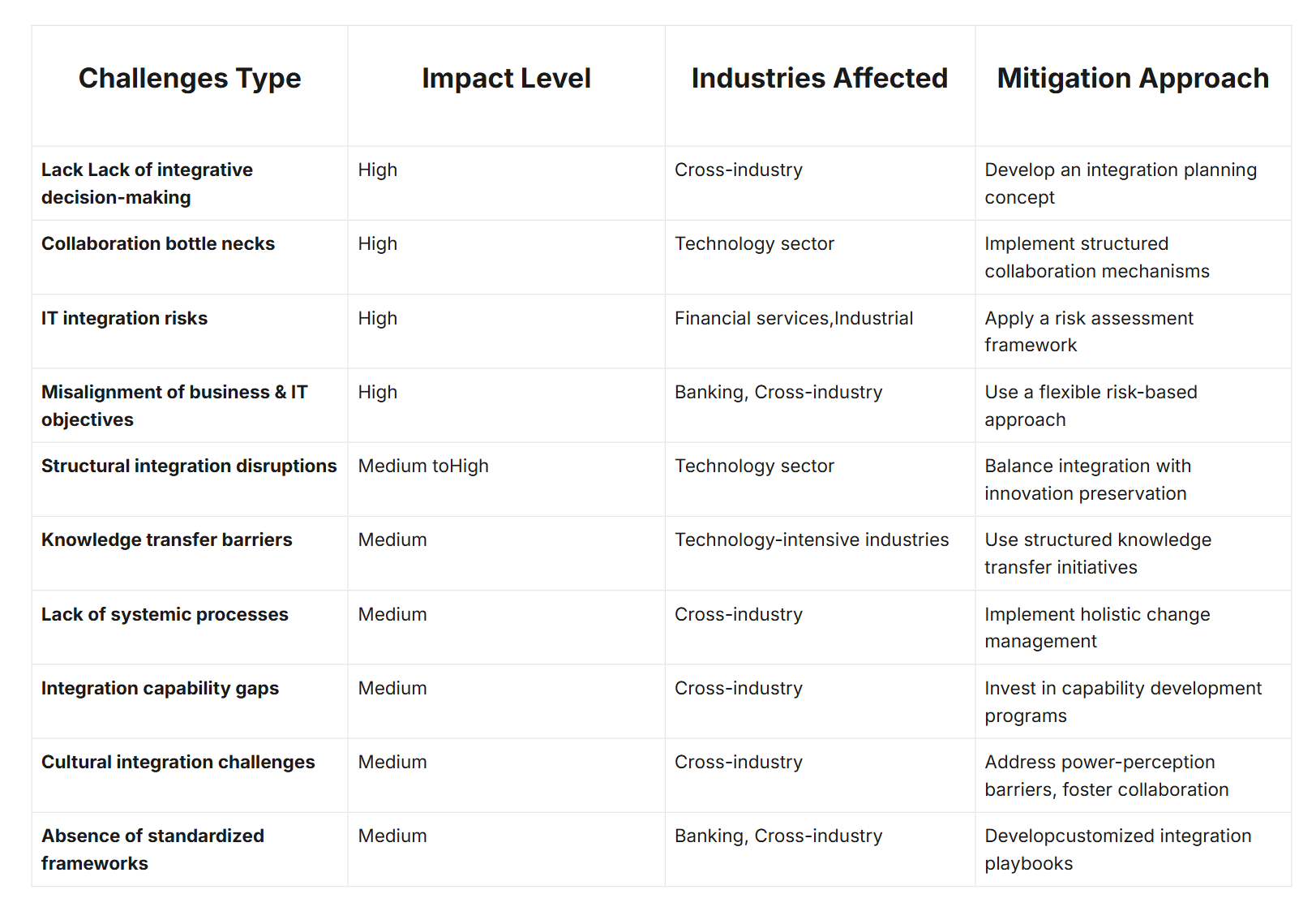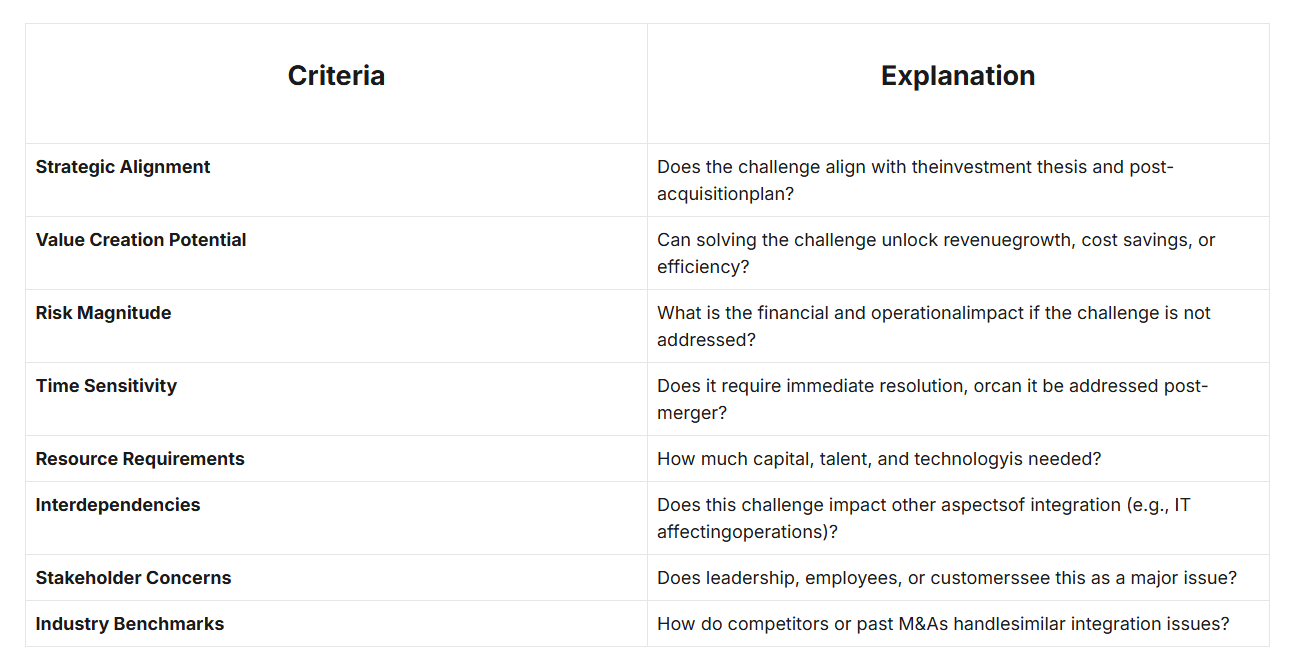5 Actionable Frameworks for Technology Integration in Private Equity Acquisitions

Private equity firms acquiring technology-driven companies often face a major hurdle: seamlessly integrating the target company’s technology, IT infrastructure, and digital operations while preserving innovation and ensuring business continuity.
Research shows that technology integration challenges can range from IT system misalignment to cultural resistance, all of which can impact post-acquisition success. To address these challenges effectively, we’ve distilled a five-framework approach that PE firms can adopt to streamline integration, reduce risk, and maximize value creation.
Framework 1: Pre-Acquisition Technology Due Diligence
Objective
Identify and assess technology integration risks before the deal closes to mitigate post-acquisition surprises.
Key Steps
- Comprehensive IT & Organizational Assessment
– Evaluate IT infrastructure, data security, compliance, and cloud capabilities.
– Assess organizational structure, culture, and strategic alignment with the acquiring firm.
– Conduct a capability gap analysis to gauge integration readiness. - Early Risk-Based Evaluation
– Identify IT integration risks, cybersecurity gaps, and operational disruptions.
– Assess potential cultural integration challenges (leadership styles, decision-making processes).
– Analyze the impact of integration on innovation capacity, especially in R&D-intensive firms. - Stakeholder Engagement & Industry Benchmarking
– Involve CTOs, CIOs, and operational leaders from both companies early in the process.
– Use industry benchmarks to compare the target’s technology stack and integration readiness.
Outcome
- A pre-merger integration risk map with mitigation plans for technology, IT, and organizational challenges.
- Clear recommendations on whether full integration, partial integration, or standalone operation is ideal.
Framework 2: Technology Integration Challenge Categorization
Objective
Classify and systematically address different types of integration challenges.

Outcome
A diagnostic tool to pinpoint where integration risks exist and apply targeted solutions.
Framework 3: Prioritization of Technology Integration Challenges
Objective
Rank and prioritize challenges based on business impact, risk, and urgency.

Outcome
A clear roadmap for tackling the highest-risk, highest-value integration challenges first.
Framework 4: Managing Innovation in Technology-Intensive Acquisitions
Objective
Ensure that technology-driven acquisitions preserve innovation while integrating into a larger company structure.
Key Considerations
- Innovation Preservation Assessment:
Identify core R&D and innovation functions that should not be disrupted.
Determine which processes must remain autonomous to maintain creativity. - Knowledge Leverage Strategy:
Develop a structured knowledge transfer plan to avoid losing key intellectual capital.
Retain critical engineering, product development, and data science teams. - Balanced Structural Integration:
Avoid rigid top-down integration that stifles agility and innovation.
Implement hybrid operating models that balance autonomy with corporate governance.
Outcome
- A roadmap for preserving innovation capacity while still integrating the acquired company effectively.
Framework 5: Post-Acquisition Technology Integration Execution
Objective
Implement a structured approach to ensure seamless integration after the acquisition closes.
Key Steps
- Cross-Functional Integration Team.
– Assemble a team with PE investors, target company leadership, IT, HR, and operations.
– Define clear roles, responsibilities, and accountability metrics. - Structured Integration Playbook
– Establish checklists and workflows for integrating IT, digital operations, and key business functions.
– Implement a post-merger integration dashboard to track performance in real-time. - Employee & Stakeholder Engagement
– Communicate integration goals and expectations transparently.
– Provide training and change management support for employees adjusting to new systems. - Synergy Tracking & Value Realization
– Set up key performance indicators (KPIs) to measure cost savings, efficiency gains, and innovation impact.
– Conduct quarterly post-merger reviews to assess integration progress.
Final Thoughts
Private equity firms need structured, repeatable frameworks to navigate the complex world of technology integration post-acquisition. These five frameworks offer a step-by-step approach to assessing risks, prioritizing challenges, preserving innovation, and executing a seamless integration process.
By adopting these actionable strategies , PE firms can ensure that technology integration becomes a source of value creation —not a post-merger nightmare.
Want to accelerate your portfolio’s post-acquisition tech strategy?
TechTorch specializes in optimizing IT integrations and eliminating tech bottlenecks to unlock rapid value creation. Let’s talk.